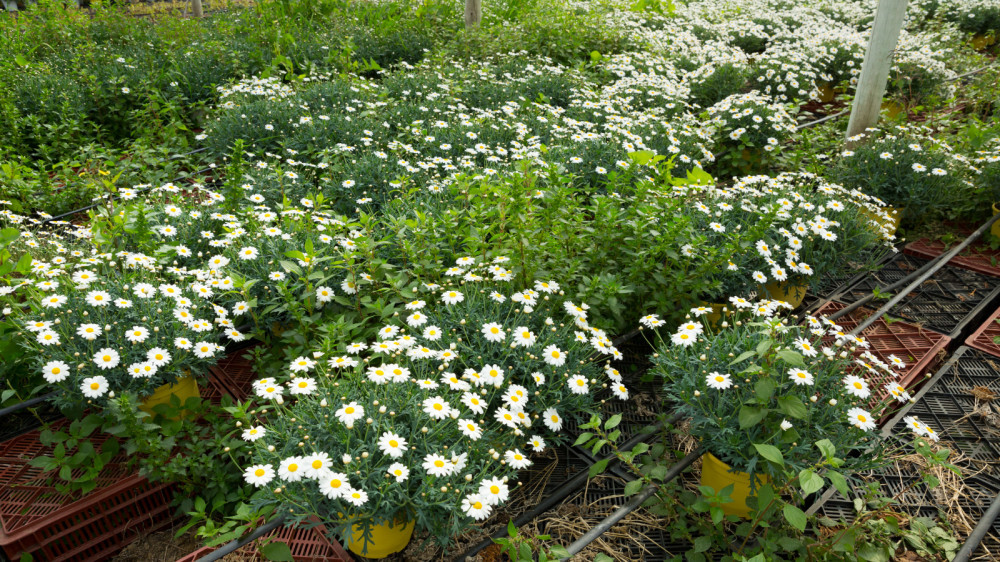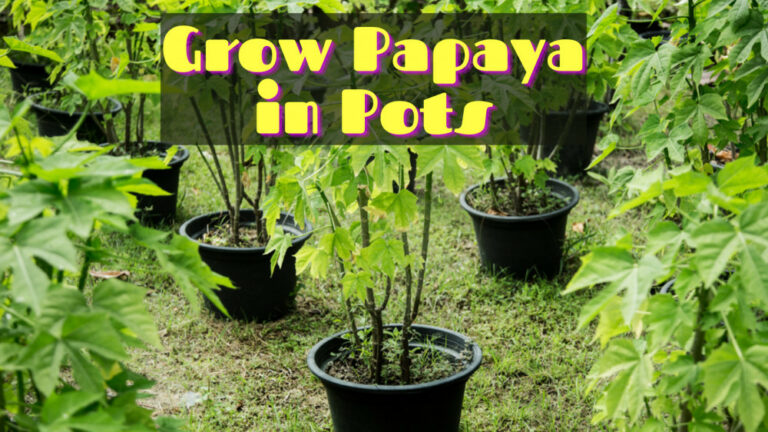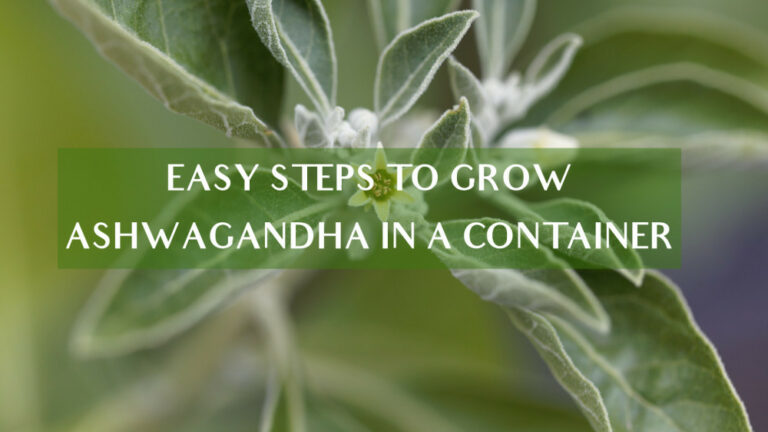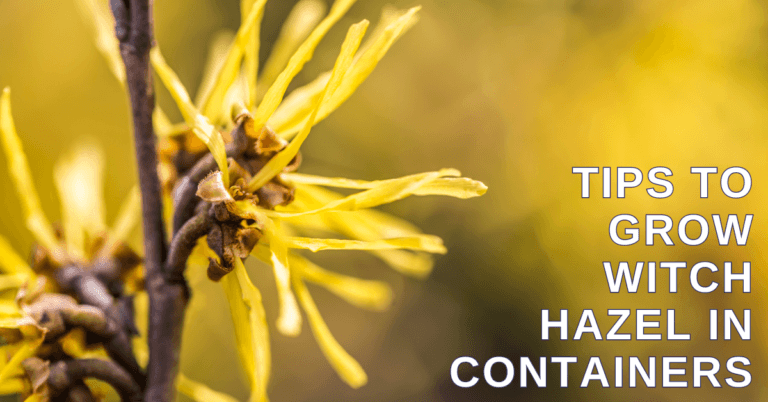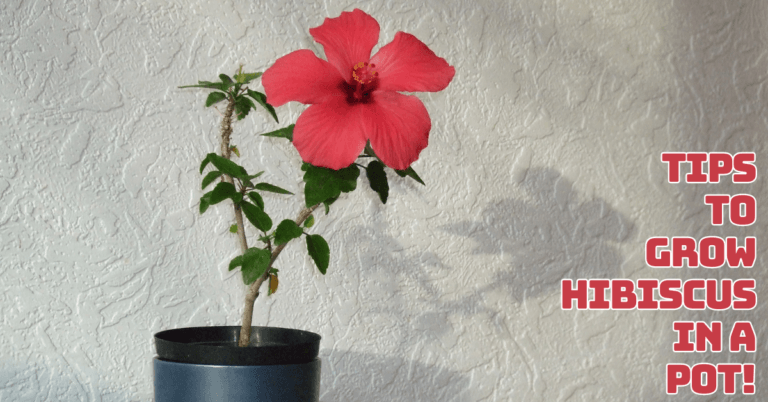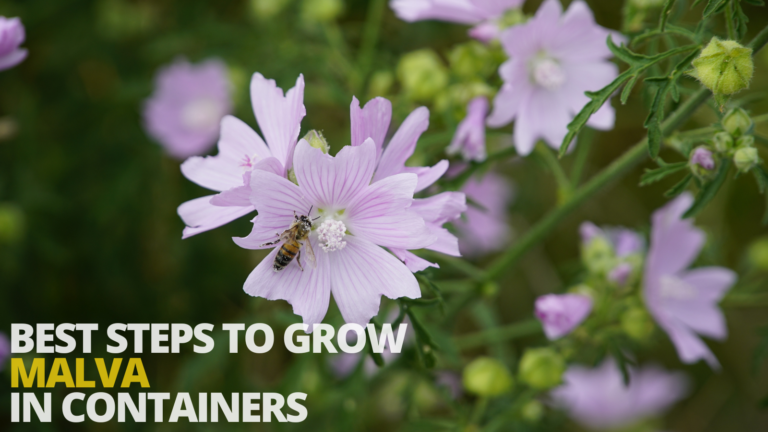Easy Steps To Grow African Daisy In Containers
Easy Steps To Grow African Daisy In Containers
These flowers grow rather quickly, flowering around two months after emerging from seeds, and are best planted in the spring once the risk of frost has passed.
These delicate perennials, reliably hardy in zones 10 to 11, are grown as annuals in other temperate zones.
Most African daisies marketed in the marketplace are cultivars and hybrids developed from O. ecklonis, O. jucundum, and a few other species, despite the genus having more than 70 species. Let’s get started to grow African daisy in containers.
History & Origin
The African daisy is a hardy annual that is indigenous to the dry, stony soils of South Africa. It is also referred to as Cape Marigold, Star-of-the-Veldt, and Osteospermum.
The 19th century saw the discovery of plants, which were then introduced to Europe and the United States, where they immediately became well-liked.
The original strains' flowers would only stay open during times of direct sunlight. The blossoms would close when the sky clouded or the sunset.
This made the plant unattractive to many people, but breeding programs in Great Britain and the United States started to create cultivars with blooms that remained open for much longer.
Like most other flowers resembling daisies, the African daisy is a member of the Aster family.
The African daisy is simple to grow, but they require full sunlight. They can be straight seeded outside after the threat of frost has passed or started indoors six to eight weeks before the final frost.
Less than two weeks are required for seeds to germinate when they are covered with approximately ¼ inch of soil.
The height of a plant will be between 12 and 24 inches. The recommended distance between mature plants is 6 inches.
The plants are particularly vulnerable to frost but bloom from midsummer to October. The plant will perish in the first light cold. Numerous varieties self-seed.
Types Of African Daisy
African daisies can give colour to your landscape, but a warm environment is required. Even as an annual, the African daisy needs a climate comparable to that of their native continent to flourish.
These flowers cannot withstand frost and will wither at the first sign of chilly weather.
White, blue, purple, and pink are just a few of the colours that these fluffy flowers are available in.
These flowers will draw butterflies and bees if you enjoy having them in your yard. Growing African daisy plants enhance the beauty of your yard in several ways.
1. Osteospermum 4D Silver
The petals of the Osteospermum 4D silver are dazzling white with a silvery undertone. These blooms have lavender-purple centers, which look lovely against the white petals.
Compared to other African daisy kinds, this one is claimed to have bushier bloom heads. The 4D variation of osteospermum doesn't close until the flowers have died, unlike most osteospermum variants, which do so at night.
2. Osteospermum Lemon Symphony
The contrasting impact of these blooms is enhanced by the lemon symphony variety's bright yellow flower petals that encircle a deep purple center.
This is a popular selection for bouquets and container gardening, and it is typically combined with purple-coloured flowers.
While most other types thrive in USDA hardiness zones 9 through 10, this cultivar is incredibly heat-resistant and may grow there. Even in the warmest summers since they love the heat.
3. Osteospermum Copper Apricot
The bicolored flowers of the copper apricot cultivar start apricot orange at the petal tip and progressively become bright pink near the center.
Usually, in a brownish-orange hue, the flower's eye stands out against the pink base of the petals.
The copper apricot is believed to thrive in areas with some shade, even though the African daisy often thrives in full sun.
The copper apricot can be an excellent choice to plant African daisies in a slightly shaded region.
4. Osteospermum Spider White
One of the most unusual African daisies is the osteospermum spider white. The spider white's petals are shaped more like a spoon than a typical daisy petal.
The petals' tips curl inward like a spoon's head, and the petals are crimped approximately halfway up.
These petals have a deep purple center and a dazzling white outside. Purple colouring may also be present in the crimped area of the petal.
When caring for this variety of African daisies, nothing mainly sticks out except the distinctiveness of the blossoms. These plants will act in a manner consistent with other African daisies.
How To Grow African Daisy In Containers
The African daisy is a vibrant annual flower that prefers warm, direct sunlight to thrive. The seeds develop swiftly into plants with silver leaves and blossoms in pink, yellow, orange, and white.
You can enjoy vibrant blooms for many seasons if you take the time to properly prepare your soil, sow the seeds, and care for the flowers after planting.
Choosing The Right Container
Plant African daisies in a pot with suitable drainage holes. Use a potting mix that drains well, and schedule frequent waterings.
Put the pot in a spot that will receive full daily sun. Nutrients will drain out quickly in containers since they are watered more frequently. Whether planted in the ground or in containers, African daisies thrive.
Blooms are at their height in late summer to early fall and again in late summer to early spring.
African daisies are best cultivated in combination with other plants that will have a visual attraction in the height of summer because they stop blooming during hot spells.
If you don't allow them to become dried out or root-bound, they are very well suited to life in containers.
Ensure your pot has sufficient drainage when planting Shasta daisies in containers, but stay away from terra cotta.
Soil
African daisies favour soil rich in organic matter with excellent drainage and a pH somewhat acidic. Add compost or other organic matter to the soil to enhance drainage and nutrients when planting.
These plants want practically sand-like soil, so the area must have excellent drainage. Make a hole about 1 foot (0.3 m) deep and 0.3 m broad. Drain the water after filling the hole with it.
Then, fill it up again and note how long it drains. You're good to go if it takes less than 15 minutes.
Your soil can contain too much clay if it isn't evaporating water rapidly enough. Try combining natural compost, dried leaves, wood chips, tree bark, and around 15% horticultural sand to break down the clay.
Rake roughly six inches (15.24 cm) of the mixture into the soil after digging down about a foot (0.3 m).
Sunlight To Grow African Daisy In Containers
African daisy flowers do best in bright sunlight. They can tolerate some shade, but they'll probably have fewer flowers.
The blooms often respond to light by opening and tend to close at night and during cloudy conditions.
Some more recent cultivars, such as “4D Pink,” “4D Silver,” and “4D Berry,” stay open longer.
While they can grow in a soft shade, African daisies will produce fewer flowers and do better in full sun. The daisy will stop flowering in the summer to withstand the stress of the heat.
Watering
African daisies can tolerate some drought once they have been established. One inch of wetness should be applied to the blossom each week for optimal results.
The soil should be consistently moist. Avoid overwatering to prevent root rot caused by wet soil.
The African Daisy's development can slacken or stop altogether during excessive heat or drought. Water may need to be added.
Even after being established, African daisies still require at least 1 inch of water weekly to grow to their full potential.
The plants will slow down and enter a dormant state during drought or extreme heat. The soil should be kept equally moist. But be careful not to overwater, as moist soil might promote illnesses like root rot.
Temperature And Humidity Of African Daisy
The African daisy plant likes moderate weather, which is when they bloom most profusely.
Although frost harms or kills them, they can withstand overnight lows of roughly 40 degrees Fahrenheit.
Mostly, they don't have a problem with humidity as long as they have excellent air circulation, appropriate watering, and good soil drainage.
Propagating
Most African daisy kinds are hybrids; thus, seeds collected from the plants won't produce true offspring. However, you can quickly spread your plants by taking cuttings. To do this:
- First, put a sterile seed-starting mixture onto a shallow tray. Slightly dampen the mixture.
- Then, using a pair of sharp bypass pruners, cut plant cuttings 2 to 3 inches long with at least two leaf nodes. Remove the lower leaves and pinch off any bloom buds that are already present.
- After dipping it in the rooting hormone, plant the cut end in the seed-starting mixture.
- Place the tray with bright indirect light and temperatures between 60 and 68 degrees Fahrenheit. Cover the tray with a plastic dome.
- The plants should be well-rooted enough to be transplanted into separate containers filled with potting soil or into an outdoor garden area in four to six weeks.
Growing African Daisy From Seeds
If osteospermum seedlings are offered, you can purchase them from a nearby nursery, if they are not, you can grow them from seed.
Many people are curious about the best time to plant African daisy seeds because these are African plants.
Approximately 6 to 8 weeks before the last frost in your area, they should be started inside at the same time as your other annuals.
You may plant African daisies by simply sprinkling the seeds on top of the soil because they require sunshine to sprout.
Avoid covering them. Put them in a cool, well-lit area once you've got them on the soil. Do not heat them to cause them to sprout. They do not like it.
In around two weeks, developing osteospermum seedlings should be seen. You can transfer the seedlings into individual pots once they are 2″–3″ (5–7.5 cm) high so they can continue to grow until the last frost has passed.
You can plant the seedlings in your garden after the first frost. For optimal growth, space them 12″ to 18″ (30.5 to 45.5 cm) apart.
Planting
Plant after the last frost in early to mid-spring. You can start planting after your area has had its last frost.
But because these plants generally won't survive a cold blast, you should be as specific that the frost season is passed.
- For optimal results, sow seeds directly into the ground. The most satisfactory results are obtained when African daisies are directly sown from seeds in your garden. If you start seedlings indoors, you can encounter difficulty because African daisy dislikes being transferred.
- About 8 to 10 weeks before the final frost in your area, you can start the seeds indoors in containers if you'd like. The seeds should be placed about 10 inches (25 cm) apart.
- Place individual seeds in sufficiently spaced areas to allow the plants plenty of room to thrive. Growing plants don't mind being a little crowded. When completely grown, they should stand around a foot (30 cm) tall. Plant the little seedlings you are transplanting about 10 inches (25 cm) apart.
- Add 1/8 inch (3 mm) of gardening soil over the seeds. Purchase gardening soil from a nearby nursery or online. Just a little bit should be sprinkled on top of the seeds. Just enough should cover the seeds. It might add some additional nutrients that aid in seed germination.
- Make the soil moist before watering the seeds. Give the seeds a light mist of water. Water slowly and keep an eye on the drainage so as not to spook them from their placements. When the ground is damp, stop.
Pruning
Pinch the young plant two or three times during the first growing season to promote vigorous stem development and a bushier plant.
Take action before flower buds emerge. Regularly deadhead your African Daisy to promote ongoing blooming. If you don't do this, the plant can go to seed, and the blooming might halt.
This plant can become lanky by midsummer. The plant can be shaped, and new growth can be promoted with some trim.
Pinching young African daisies twice or three times in the growing season produces a strong stem and a robust, bushy plant.
Simply remove the stem from the second set of leaves by pinching the tips of new growth. If you pinch the plant after flower buds have formed, the bloom will be delayed.
Fertilizer
These flowers require a lot of sustenance to develop and bloom at their best. Along with incorporating compost into the soil, monthly flowering plant fertilizer applications should be made throughout the growing season. Potted plants might need to be fed even more frequently.
Use a slow-release, complete fertilizer with a formula like 6-10-4 to fertilize the African daisy in late winter or early spring, just before new growth begins, and once more in the fall. If there won't be any rain, spread it out over the area around the plant and water it in.
Winter Care
The first harsh frost will cause the African Daisies to die off because they cannot survive the winter. This container plant can be brought indoors and kept in a room protected from cold temperatures before an intense frost. The space should have as much brilliant light as feasible.
African Daisy needs to relax over the winter, so don't fertilize and water them infrequently. Cut the plant back in the spring and leave it outside for a few hours daily.
During this time, stay out of the sun. The plant can stay outside till the risk of frost has passed.
Common Pests & Diseases Of African Daisy
If the plants are kept stress-free in the appropriate habitat, there aren't many pests or illnesses that harm African daisies. However, be alert for fungi infections like gray mould in wet or humid environments.
The symptoms of such illnesses include damaged or discoloured foliage. If necessary, use a fungicide and work to increase the airflow around your plant, which can help prevent fungal illnesses.
Whiteflies and aphids are two common plant pests that can cause trouble, especially for stressed plants.
However, if discovered early enough, they can be managed with an insecticidal soap or chemical spray.
Conclusion
In the language of flowers, daisies are also equated with grandeur, fidelity, and high regard as symbols of purity, innocence, and devoted love.
The African daisies are unique because they can convey great flattery, such as “you are the cutest,” a sentiment that both men and women who receive them share. Feel free to message us if you face any problems growing African daisies in containers.
I trust you enjoyed this article on the Easy Steps To Grow African Daisy In Containers. Please stay tuned for more blog posts to come shortly. Take care!
JeannetteZ
>>>Please click here to read my all-inclusive article about Container Gardening<<<
>>>Are you interested in homegrown herbs and medicine? Please click here to find out more about it!<<<
Your Opinion Is Important To Me
Thoughts? Ideas? Questions? I would love to hear from you. Please leave me your questions, experience, and remarks about this article on the Easy Steps To Grow African Daisy In Containers, in the comments section below. You can also reach me by email at Jeannette@Close-To-Nature.org.
Disclosure
This post may contain affiliate links. As an Amazon Associate and other affiliate programs, I earn from qualifying purchases at no extra cost to you. Read my full affiliate disclosure.
You might also enjoy these blog posts:
Easy Steps To Grow Peace Lily In Containers
Easy Steps To Grow Stevia In Containers
All About Healing Visualization And What You Need To Know
Most Essential List Of Healing Herb Plants
What You Need To Know About Sound Healing

